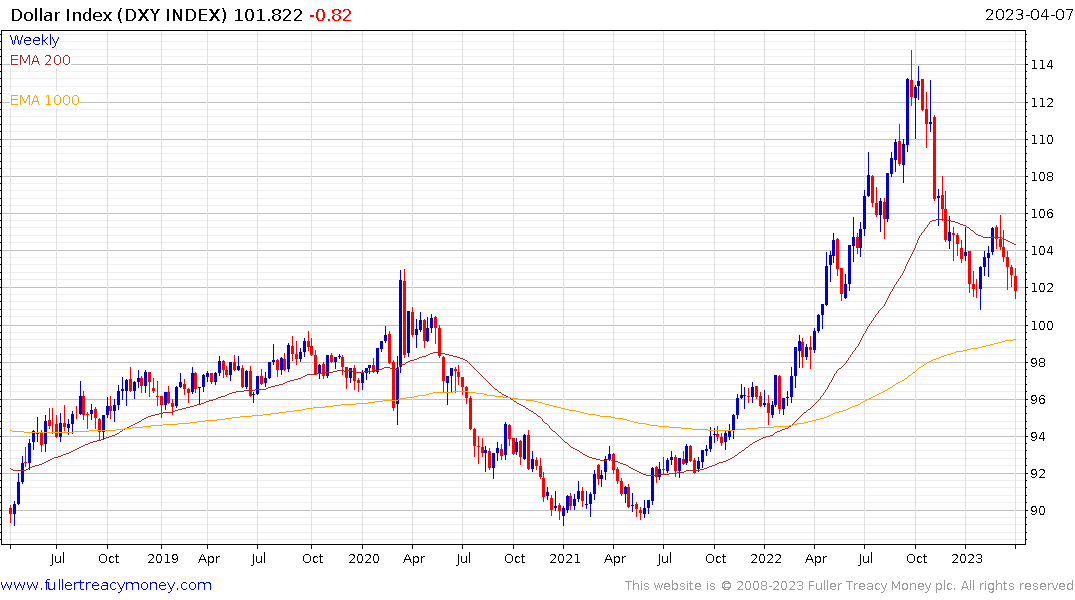Why a BRICS currency is a flawed idea
This article by Paul McNamara for the FT may be of interest. Here is a section:
China’s dominance is underlined further by the fact that it is a key trade partner for the commodity exporters, which have industrial cycles that clearly track the ebb and flow of the Chinese credit cycle. And after the attack on Ukraine, China’s financial influence over isolated Russia has risen further.
It is obvious but Chinese strategic interests are not especially aligned with those of the other countries. One of China’s priorities is finding somewhere to park its external surpluses beyond the reach of the US Office of Foreign Assets Control and finding stores of value other than US Treasuries. While none of the other four Brics members can provide liquid assets, they can provide investment opportunities especially in raw materials. As with the Belt and Road Initiative, Chinese authorities prefer to have control in such matters.
Russia and the gulf energy exporters prefer to accumulate “rainy day” sovereign wealth funds away from the US. However, the alternative to the US is not a diversified group of growing countries, but essentially one country — China — with a vast thirst for energy and other raw materials.
So not only are there practical challenges in a common Brics currency. In seeking one to challenge US hegemony in foreign exchange, the non-Chinese members of countries of the group may just increase their dependence on Beijing.
During the Global Financial Crisis of 2008, the US took the decision to debase the currency in service to avoiding a depression. Money supply exploded and purchasing power of the dollar collapsed as asset prices leaped higher. Like any major event, there are both positive and negative outcomes. An even more severe economic decline was avoided. The downside was political populism has gained a foothold in many countries and the USA’s creditors became suspicious that they are no longer willing to take the hard decisions necessary to support the value of the currency.
In June 2009, China was already talking about the need for stable reserve currencies and the promoting the use of the IMF’s special drawing rights. Here is a section from a Reuters article at the time:
“One important consensus we have reached upon reflection is that is that it is important to keep the exchange rates of major currencies relatively stable and promote a diversified and rational international monetary system,” he said.
China suggested in March that the International Monetary Fund’s Special Drawing Rights, or SDRs, could play a role as a future reserve currency, which would lessen the reliance on the U.S. dollar as the world’s top reserve unit.
The SDR was rebalanced in 2021 the new weights went into effect last year. That reset the five-year rebalance schedule so the next will be in 2027. The latest adjusted increased the Dollar’s weighting from 41.73% to 43.38% and the Renminbi’s from 8.33% to 12.28%. The weightings of the Euro, Yen and Pound were all sacrificed to make room for those increases.
Talk of creating a common currency for the BRICS nations needs to be viewed in the context of China now being the dominant trading partner for every almost every commodity exporter. It is inevitable they will want to conduct more trade in Renminbi.
That trend got a major boost from the confiscation of Russia’s foreign currency reserves following its invasion of Ukraine. Now every country is aware that is a risk and has no choice but to take pre-emptive action.
For its part China is attempting to hold the value of the Renminbi steady versus the Dollar and has ensured its sovereign bond market is stable by avoiding excessive money printing to deal with the pandemic.
The USA is now an energy exporter so that gives is more leeway to plot an independent path. The swift pace of interest rate hikes and persistent statements about wanting to return to 2% inflation are as much about placating international creditors as addressing domestic concerns.
 The next hurdle will be in how much economic pain the Fed is willing to tolerate and how generous they will be with accommodation during a recession. The Dollar Index continues to trend lower in anticipation of rates declining but Treasuries are rallying on the assumption inflation will be less of an issue.
The next hurdle will be in how much economic pain the Fed is willing to tolerate and how generous they will be with accommodation during a recession. The Dollar Index continues to trend lower in anticipation of rates declining but Treasuries are rallying on the assumption inflation will be less of an issue.


